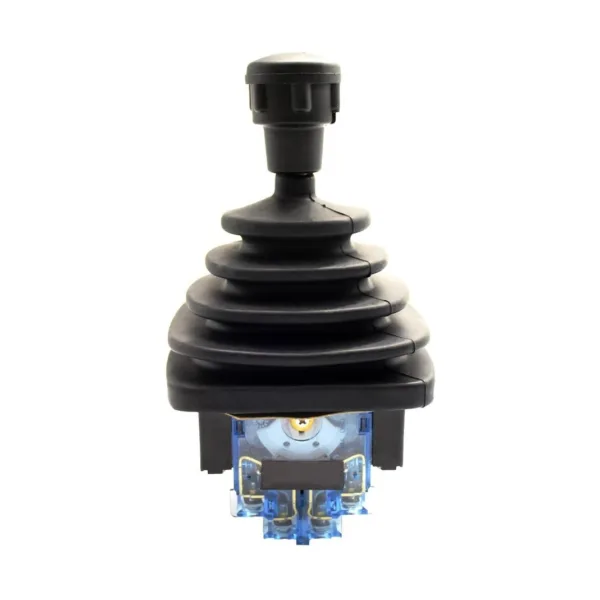While joysticks are commonly associated with basic equipment control, their advanced uses in specialized applications are revolutionizing multiple industries. These versatile controllers offer precision, durability, and innovative functionality that goes far beyond simple di

rectional commands.
1. Robotic Arm Precision Control in Manufacturing
Industrial joysticks have become indispensable for controlling robotic arms in advanced manufacturing settings. Unlike basic applications, these advanced uses of industrial joysticks incorporate force feedback and multi-axis control for unprecedented precision.
Key benefits include:
- Micro-adjustment capabilities for delicate assembly tasks
- Haptic feedback systems that provide tactile response
- Programmable resistance for different materials
- Multi-axis synchronization for complex movements
Automotive manufacturers particularly benefit from these advanced uses of industrial joysticks, where sub-millimeter precision is required for component placement and welding operations.
2. Underwater Remotely Operated Vehicles (ROVs)
The marine exploration industry relies heavily on specialized joysticks designed for extreme environments. These controllers must withstand high pressure while maintaining precise control of ROVs at depths exceeding 3,000 meters.
Advanced features include:
- Pressure-compensated housings
- Corrosion-resistant materials
- Multi-function trigger controls
- Integrated camera and sensor controls
These advanced uses of industrial joysticks enable delicate underwater operations like pipeline inspection, scientific sampling, and deep-sea rescue missions.
3. Military Drone Operation and Surveillance
Modern military applications have taken joystick technology to new heights with UAV (Unmanned Aerial Vehicle) control systems. These advanced uses of industrial joysticks combine traditional flight controls with sophisticated weapon and surveillance systems.
Critical military-grade features:
- EMI/RFI shielded components
- Vibration dampening for use in moving vehicles
- Programmable multi-function buttons
- Biometric authentication for security
The precision and reliability of these systems can mean the difference between mission success and failure in combat situations.
4. Medical Robotics for Surgical Procedures
In the medical field, industrial joysticks have evolved into life-saving tools. Robotic surgery systems like the da Vinci Surgical System utilize specialized joysticks that translate surgeon movements into precise robotic actions.
These advanced uses of industrial joysticks feature:
- Sub-micron level precision
- Tremor reduction algorithms
- Sterilizable components
- Force-sensitive controls
The medical industry continues to push the boundaries of what’s possible with industrial joystick technology, enabling minimally invasive procedures with faster recovery times.
5. Virtual Reality Training Simulators
joysticks play a crucial role in VR training systems for high-risk professions. From flight simulators to heavy equipment operation, these advanced uses of industrial joysticks provide realistic feedback and control.
Innovative applications include:
- Dynamic resistance simulation
- Motion tracking integration
- Wearable joystick systems
- Haptic feedback for realistic training
These systems significantly reduce training costs while improving safety for operators in fields like aviation, mining, and emergency response.
The advanced uses of industrial joysticks demonstrate how this technology has evolved far beyond basic equipment control. From deep-sea exploration to life-saving medical procedures, industrial joysticks continue to enable precision control in the most demanding environments.
As industries continue to push technological boundaries, we can expect even more innovative applications for industrial joysticks in fields like space exploration, autonomous vehicle control, and advanced AI systems. The future of industrial control lies in these versatile, precise, and increasingly intelligent input devices.
Modern industrial control devices have evolved to serve specialized functions across various technical fields. These rugged interfaces now facilitate operations in environments where precision and reliability are critical.
1. Robotic Assembly Systems
Contemporary manufacturing facilities utilize durable control interfaces for robotic systems. These devices enable operators to:
- Position components with sub-millimeter accuracy
- Switch between multiple operation modes
- Adjust sensitivity for different materials
2. Submersible Equipment Control
Marine technology applications require specialized controllers that can withstand harsh underwater conditions. Key features include:
- Waterproof and pressure-resistant construction
- Enhanced grip for use with diving gloves
- Integrated tool activation controls
3. Aerial Drone Operation
Unmanned vehicle systems rely on responsive control mechanisms for both navigation and payload management. Modern solutions incorporate:
- Programmable function buttons
- Adjustable tension mechanisms
- Vibration feedback systems
4. Medical Equipment Interfaces
Healthcare technology has adapted industrial control solutions for sensitive medical applications. These specialized versions offer:
- Sterilizable surfaces
- Reduced movement amplification
- Emergency stop functions
5. Simulation Training Devices
Vocational training programs use realistic control systems to prepare operators for field conditions. These training aids provide:
- Variable resistance settings
- Scenario-based response profiles
- Performance tracking capabilities
The expansion of control device applications demonstrates their versatility across technical fields. As interface technology continues to advance, we can anticipate broader adoption in emerging industries and more sophisticated operational environments.
Future developments may include enhanced AI integration, improved tactile feedback systems, and adaptive control surfaces that adjust to user preferences.


